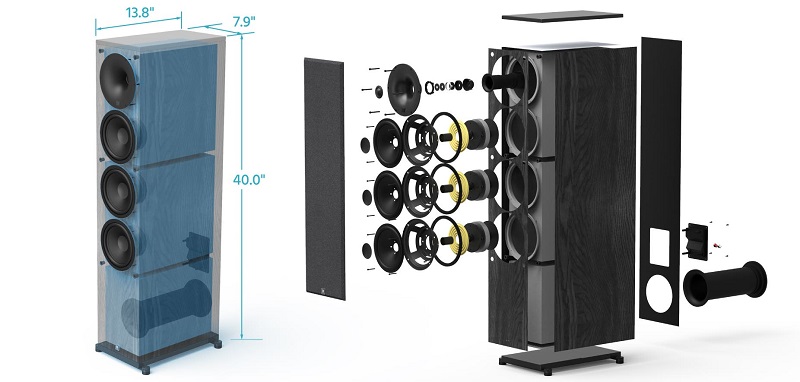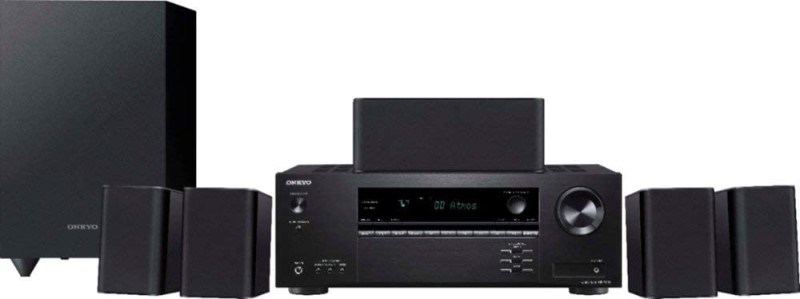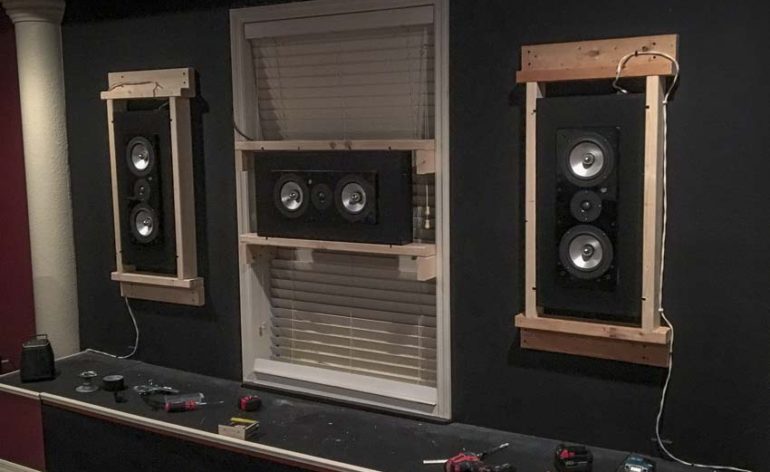Do I Need to Upgrade My Center Speaker with New Front Speakers?
You’ve got a hankering for an upgrade. What do you want? New speakers! When do you want them? Now! But…there is a problem. You’d like to upgrade your front left and right speakers but there is a catch. That pesky center speaker! If you upgrade your front left and right speakers, does the center speaker have to be replaced as well? As with most things in this hobby, the answer is, “It depends.” Let’s discuss.
The Problem
If you are wondering what all the fuss is about, we are worried about timbre matching. As sounds move around your room, and through different speakers, you want them to all sound the same. If you upgrade your left and right speakers and not your center, you risk a sonic mismatch. As much of the action in a movie happens at the front of the room, having your center tonally different from your left and right speakers can sound strange. You wouldn’t want that.
The general advice is to always have matching front speakers. The left and right should match the center. If you are buying a whole set of speakers, this usually isn’t an issue. But if you are upgrading, we are talking about a significant cost increase. Center speakers routinely cost more than an individual front speaker. Buying a center speaker along with your upgraded front left and right speakers can increase your budget by 50% or more!

Trying it Costs Nothing…Usually
I’m a big believer in trusting your ears. People online will tell you that you “need” to do a thing even when it may not be true in your individual case. As someone that has tested dozens of speakers, I can say with experience that, in most instances, a good center speaker works just fine with most front speakers. When they mismatched? That wasn’t hard to detect. I heard it immediately as did anyone else that was in the room. If you buy your dream upgraded front speakers, you’ll know almost immediately if your center speaker works with them or not.
Of course, this assumes that it will cost you nothing extra to wait to buy the center speaker. That isn’t always the case. If you are buying online, you could save on shipping by buying all your speakers at once. You could get a discount for a larger purchase. If you are buying locally, you may get some sort of package deal. If you aren’t willing to risk the additional costs, how do you know if you should buy the center speaker when you upgrade your front speakers?
Can’t Afford the Center Speaker, Go Phantom…for a While
If you really can’t afford a center speaker and you are ready to upgrade your front speakers, just do it. If you try it out and it doesn’t sound good, you can run a phantom center. Every AV receiver on the market can route the center channel information to your front left and right speakers. No, this will not be as good as having a physical center speaker, but at least you won’t have a tonal mismatch. Many people go this route as they save up money for other upgrades. If your front left and right speakers are wider than your seating area, you might find you don’t need a center!
How To Know If Your Center Speaker Will Match Your Upgraded Front Speakers
If you really want to know how your center speaker will stand up to your new fronts, there are a few things you can do to reassure yourself.
Do Some Research
If you want to know if there is definitely going to be a tonal mismatch between your new front speakers and your existing center, you are going to have to do some research. Some speakers have tonal qualities that are unique while others do not. The first step is to research all the speakers in question. Read professional reviews and compare all the speakers in question. Are they all described similarly? If the upgraded front speakers and existing center speaker are all described as “flat,” that is a great sign. Chances are, they will play nice together.

One thing to consider is their sensitivity. Horn-loaded speakers, like Klipsch, are highly efficient. This means it takes very little power for them to get very loud. Pairing less sensitive speakers with very sensitive ones can make it impossible to level-match them. Tonally, speakers with horn-loaded tweeters generally should be paired with other speakers with similar tweeters.
That Didn’t Help
Don’t be surprised if you come out the other side of your research without any firm answers. There is no unified nomenclature for speaker reviews. Even measurements can’t tell you how a speaker will sound in your room. You picked your front speaker upgrade because you felt they would sound better than your current speakers. By definition, you’d expect that your center channel wouldn’t keep up. That may be true, but HOW true is it? Is it so true that you won’t be able to live with your current center or will the mismatch be tolerable until you can save up enough for an upgraded center?
Where Did You Start?
This is the real question. Did you start with a soundbar? You can turn that into a center (sometimes) but you can’t expect it to sound the same as your new front speakers. Did you start with hand-me-down satellite speakers with no name and proprietary connections? Don’t expect that center speaker to sound like anything you might buy as an upgrade to your front speakers.

But That’s Not You
Most of you reading this have already progressed past this point. You are looking to move past your entry-level home theater speakers to your “forever” speakers. In your case, you could reasonably expect that your current center speaker might be able to keep up with your new upgraded front speakers. If you believe this is you, that research we suggested above, is far more important. You may want to take it to the next level.
That Next Level is Taking Your Speaker on a Trip
The only way to know for sure if your center speaker will tonally match your planned upgraded front speakers is to hear them together. You can do this by taking your existing center to wherever you can to put it up against your planned fronts. If you are shopping locally, bring your center to the store and ask if you (or they) can hook it up and test. If you are buying online (and they don’t have free shipping both ways), inquire about owners in your area. Many online manufacturers maintain a forum or have a list of owners that are willing to allow people into their homes to demo their speakers. For a six-pack or just a few kind words, you can test out your center with the speakers of your dreams.
Most of the time, we’d say that you’d want to hear the speakers in your room. This is not the case here. You don’t care how the speakers sound, you care how they sound in comparison to your center speaker. If they all sound relatively the same, you can buy just the fronts. If they sound different, you’ll need to upgrade the center as well (or go with a phantom as we discussed). Either way, you’d know.
Our Take
It is natural to worry when making a big purchase. Even if the amount you are paying for your planned upgraded fronts isn’t all that much, it is still an important purchase. Having peace of mind that you won’t be disappointed is important. Hopefully, it is reassuring to know that you have options.



That photo of a MTM speaker on it’s side when it doesn’t need to be just makes me cringe. The lobing from such a design is something Rob has talked about several times on the show, and countless speaker reviews that use objective measurement show it can be a problem. In this case, in the photo, it would be totally plausible to fix that situation and have the glorious three matching speakers across the front sound stage!
Speaking of measurements, CEDIA and the CTA have adopted a standard called CEA2034, sometimes referred to as a spinorama. The standard paper is available for free on the CTA web site after free registration. (Other sites try to charge up to $100 for it.) This is a measurement protocol which tests thousands of angles of measurement in an anechoic manner. So, while measurements cannot tell one everything, especially with speakers that strive for a neutral sound on axis and in room, seeing similar results can be a useful indicator of what speakers to consider, first. While too many manufacturers are reluctant to publish actual measurement data that can be used this way (one has to wonder why…) some of them are starting to, and there are several independent reviewers that now publish this data for speakers they review and share it online.
And, finally, I agree with the idea of a phantom center being a fine solution in some cases. As I like to say, the center speaker is both the least and most important speaker.
“Least,” because a phantom center can work very well, so you may not need a center speaker and or be better off without one (especially if there is only one critical listener in the household, the seating area is not too wide, and or the only center options would be significant compromises).
“Most,” because if you DO have a center speaker, and it’s crappy, it can really detract from the experience of watching movies, since in some movies the center speaker contains more content than any other speaker. I would skimp out on the quality of surround speakers, and atmos speakers, long before skimping on the budget for the center speaker.
Most and least…totally agree!